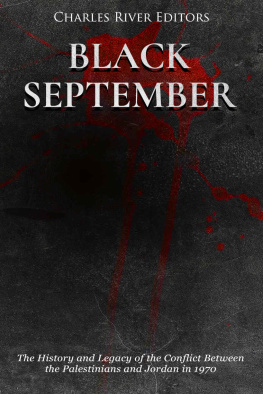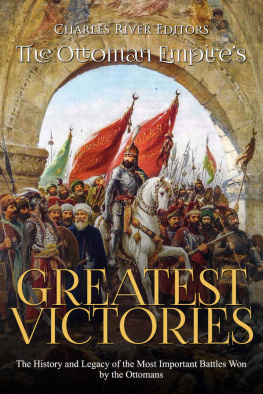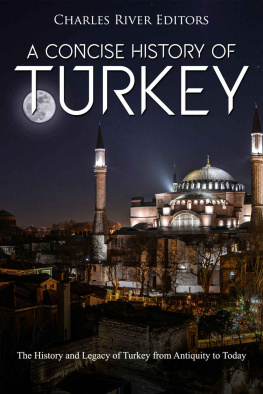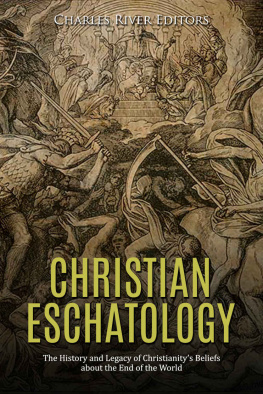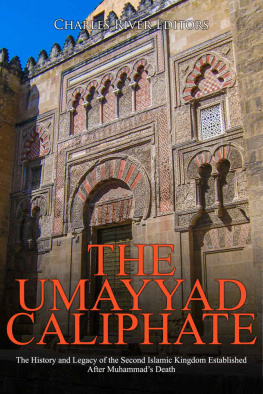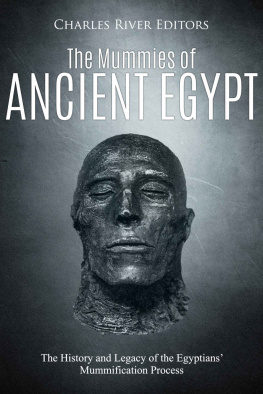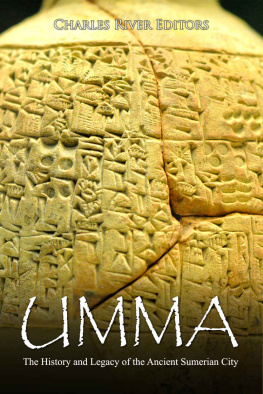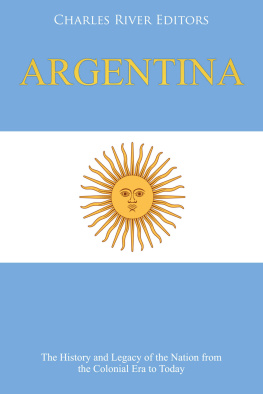Charles River Editors - Black September: The History and Legacy of the Conflict Between the Palestinians and Jordan in 1970
Here you can read online Charles River Editors - Black September: The History and Legacy of the Conflict Between the Palestinians and Jordan in 1970 full text of the book (entire story) in english for free. Download pdf and epub, get meaning, cover and reviews about this ebook. year: 2017, publisher: Charles River Editors, genre: Politics. Description of the work, (preface) as well as reviews are available. Best literature library LitArk.com created for fans of good reading and offers a wide selection of genres:
Romance novel
Science fiction
Adventure
Detective
Science
History
Home and family
Prose
Art
Politics
Computer
Non-fiction
Religion
Business
Children
Humor
Choose a favorite category and find really read worthwhile books. Enjoy immersion in the world of imagination, feel the emotions of the characters or learn something new for yourself, make an fascinating discovery.
- Book:Black September: The History and Legacy of the Conflict Between the Palestinians and Jordan in 1970
- Author:
- Publisher:Charles River Editors
- Genre:
- Year:2017
- Rating:4 / 5
- Favourites:Add to favourites
- Your mark:
- 80
- 1
- 2
- 3
- 4
- 5
Black September: The History and Legacy of the Conflict Between the Palestinians and Jordan in 1970: summary, description and annotation
We offer to read an annotation, description, summary or preface (depends on what the author of the book "Black September: The History and Legacy of the Conflict Between the Palestinians and Jordan in 1970" wrote himself). If you haven't found the necessary information about the book — write in the comments, we will try to find it.
Black September: The History and Legacy of the Conflict Between the Palestinians and Jordan in 1970 — read online for free the complete book (whole text) full work
Below is the text of the book, divided by pages. System saving the place of the last page read, allows you to conveniently read the book "Black September: The History and Legacy of the Conflict Between the Palestinians and Jordan in 1970" online for free, without having to search again every time where you left off. Put a bookmark, and you can go to the page where you finished reading at any time.
Font size:
Interval:
Bookmark:
By Charles River Editors

A picture of smoke rising near Amman during the fighting

Charles River Editors is a boutique digital publishing company, specializing in bringing history back to life with educational and engaging books on a wide range of topics. Keep up to date with our new and free offerings with this 5 second sign up on our weekly mailing list , and visit Our Kindle Author Page to see other recently published Kindle titles.
We make these books for you and always want to know our readers opinions, so we encourage you to leave reviews and look forward to publishing new and exciting titles each week.

A picture of a Palestinian refugee camp near Amman, Jordan
Black September
So long as the Arabs fight tribe against tribe, so long they will be a little people. Lawrence of Arabia
We had thousands of incidents of breaking the law, of attacking people. It was a very unruly state of affairs in the country and I continued to try. I went to Egypt, I called in the Arabs to help in any way they could particularly as some of them were sponsoring some of these movements in one form or another but without much success, and towards the end I felt I was losing control. In the last six months leading up to the crisis the army began to rebel. I had to spend most of my time running to those units that had left their positions and were going to the capital, or to some other part of Jordan, to sort out people who were attacking their families or attacking their soldiers on leave. I think that the gamble was probably the army would fracture along Palestinian-Jordanian lines. That never happened, thank God. King Hussein of Jordan
In May 2011, President Barack Obama gave speeches about the Middle East that discussed the Israeli-Palestinian conflict, using terms like final status issues, 1967 lines with mutually agreed swaps, and demographic realities. Obamas speeches were strongly denounced by both the Palestinians and the Israelis, while political commentators across the world debated what Obamas speeches actually meant.
Welcome to the Middle East conflict, a conflict that is technically 63 years old and counting but has its roots in over 2,000 years of history. With so much time and history, the peace process has become laden with unique, politically sensitive concepts like the right of return, contiguous borders, secure borders, demilitarized zones, and security requirements, with players like the Quartet, Palestinian Authority, Fatah, Hamas, the Arab League and Israel. Over time, it has become exceedingly difficult for even sophisticated political pundits and followers to keep track of it all.
On May 14, 1948, the British Mandate officially expired. That same day, the Jewish National Council issued the Declaration of the Establishment of the State of Israel. About 10 minutes later, President Truman officially recognized the State of Israel, and the Soviet Union also quickly recognized Israel. However, the Palestinians and the Arab League did not recognize the new state, and the very next day, armies from Egypt, Syria, Lebanon and Iraq invaded the former British Mandate to squelch Israel, while Saudi Arabia assisted the Arab armies. Jordan would also get involved in the war, fighting the Israelis around Jerusalem. Initially, the Arab armies numbered over 20,000 soldiers, but the Zionist militia groups like the Lehi, Irgun and Haganah made it possible for Israel to quickly assemble the Israel Defense Forces, still known today simply as the IDF. By the end of 1948, the Israelis had over 60,000 soldiers and the Arab armies numbered over 50,000.
In early 1949, Israel began signing armistices with Egypt, Jordan, and Syria, which left Israel in control of nearly 75% of the lands that were to be partitioned into the two states under the 1947 plan. Jordan now occupied Judea and Samaria, which later became known as the West Bank due to its position on the western bank of the Jordan River. Jordan also occupied three quarters of Jerusalem, with the Israelis controlling only about a quarter in the western part of the city. To the west, Egypt occupied the Gaza Strip. The new armistice lines became known as the Green Line, and the conflict has continued to involve those lines and the issues that were contested in a war now nearly 70 years old.
In 1964, the Arab League met in Cairo and formed the Palestine Liberation Organization (PLO), which intended to liberate Palestine and drive the Jews into the sea. At the time, Egypt and Jordan occupied the Gaza Strip and West Bank respectively, which the PLO had no interest in contesting. The PLO Charter stated, This Organization does not exercise any territorial sovereignty over the West Bank in the Hashemite Kingdom of Jordan, or on the Gaza Strip. Although the PLO became the most famous Palestinian organization, it actually consisted of several independently operating groups. The most noteworthy of them was Fatah, which had been founded in 1956 and had been conducting attacks on Israeli targets since its inception. Among the members of Fatah was Yasser Arafat, who would soon become the most visible face of the PLO. Other main groups within the PLO included Popular Front for the Liberation of Palestine and the Popular Democratic Front for the Liberation of Palestine, which essentially were militant groups.
In early June 1967, the Israelis captured Jordanian intelligence that indicated an invasion was imminent. On June 5, the Israelis launched a preemptive attack that knocked out the air forces of its Arab neighbors. Over the next six days, the Israelis overwhelmed the Egyptians in the west, destroying thousands of tanks and capturing the Gaza Strip and the entire Sinai Peninsula. At the same time, Israel drove the Jordanians out of Jerusalem and the West Bank, and it captured the Golan Heights from Syria near the border of Lebanon.
With realities changing on the ground, Palestinian resistance changed tactics and locations, and the tension caused by Palestinian attacks originating from Jordan would eventually lead to the expulsion of the PLO from Jordan. In conjunction with that, the notorious Palestinian group, Black September, would launch one of the most famous terrorist attacks of the 20 th century at the Olympics in Munich in 1972, and that would touch off some of the Israeli Mossads most legendary operations as the Israelis sought to track down those responsible for the attack.
Black September: The History and Legacy of the Conflict Between the Palestinians and Jordan in 1970 looks at the fighting and its effects on the Middle East. Along with pictures and a bibliography, you will learn about Black September like never before.
The Kingdom of Jordan came into being as a consequence of the difficult circumstances associated with the British withdrawal from Palestine. The history of the Middle East, so multilayered and complicated as to defy any possibility of brief explanation, nonetheless acquired its modern form largely in the wake of World War I. Prior to this, the Arab world, from the eastern Mediterranean to the Caspian Sea, and from the Balkans to North Africa, and south along both shores of the Red Sea, lay under the control of the Ottoman Empire, governed from the Turkish capital of Constantinople.
Font size:
Interval:
Bookmark:
Similar books «Black September: The History and Legacy of the Conflict Between the Palestinians and Jordan in 1970»
Look at similar books to Black September: The History and Legacy of the Conflict Between the Palestinians and Jordan in 1970. We have selected literature similar in name and meaning in the hope of providing readers with more options to find new, interesting, not yet read works.
Discussion, reviews of the book Black September: The History and Legacy of the Conflict Between the Palestinians and Jordan in 1970 and just readers' own opinions. Leave your comments, write what you think about the work, its meaning or the main characters. Specify what exactly you liked and what you didn't like, and why you think so.

